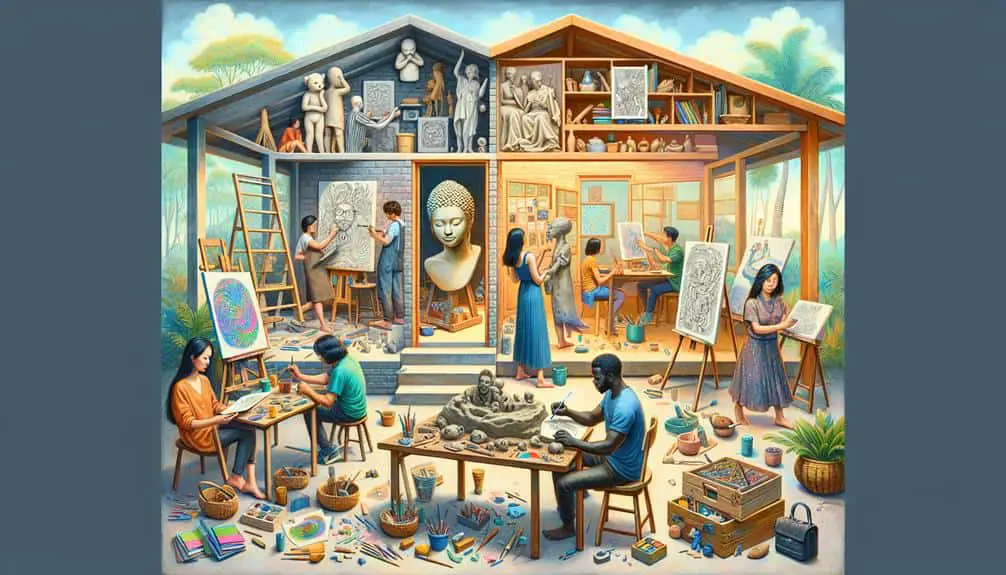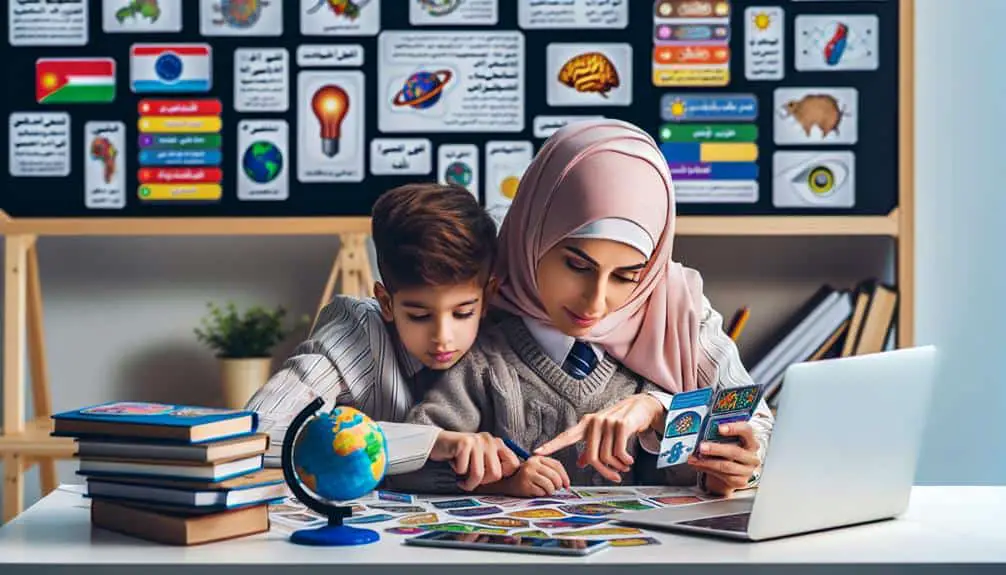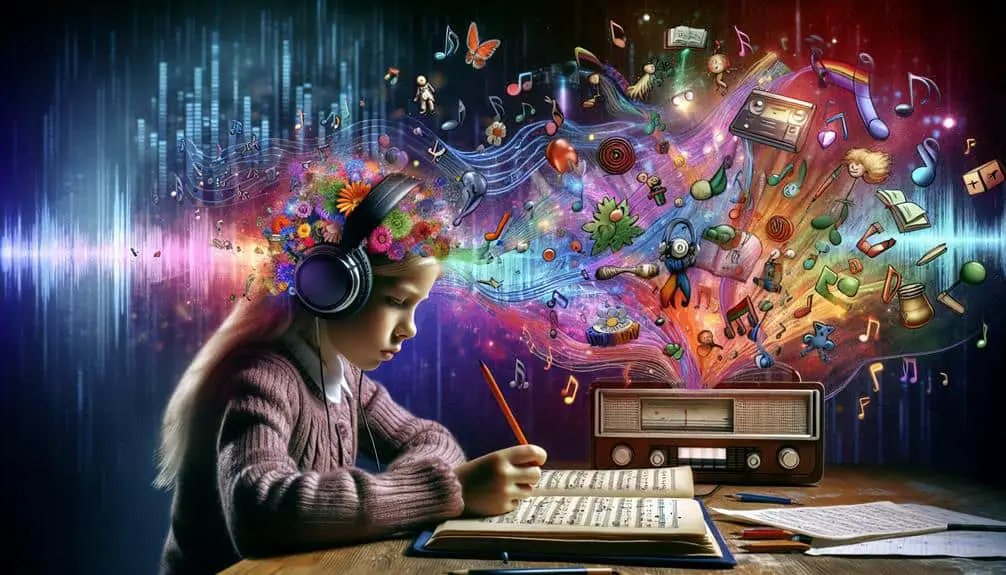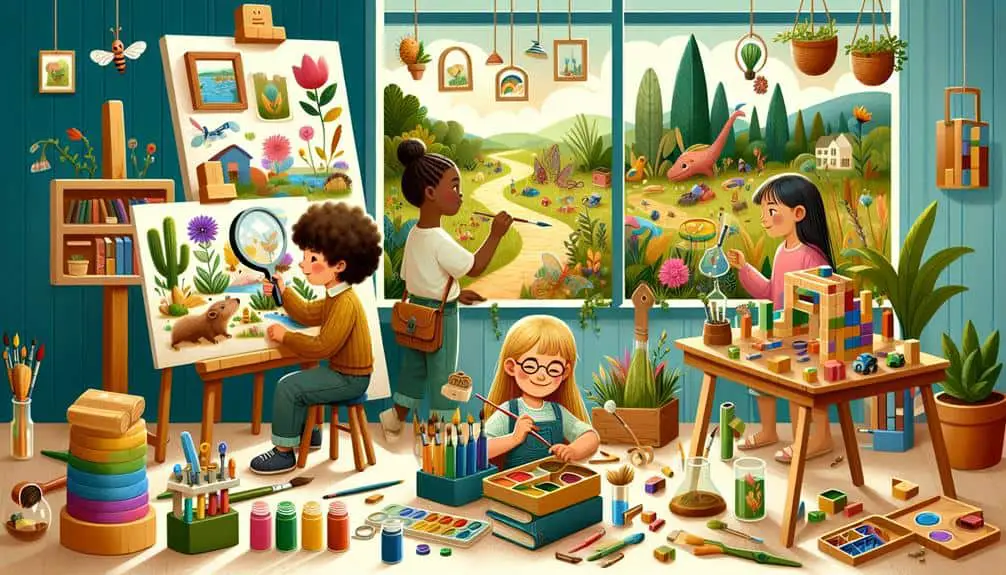To nurture creativity with diverse learning styles at home, customize activities to match individual preferences. This tailored approach boosts academic performance and motivation. Embrace multisensory strategies to enhance comprehension and retention by engaging multiple senses. Encourage exploration and experimentation with varied materials to develop problem-solving skills and innovation. Create a creative environment by setting up artistic spaces and exposing learners to diverse stimuli. Celebrate uniqueness to foster open communication and idea sharing. By tailoring activities to personal styles, you can enhance creativity and learning.
Key Points
- Create a creative corner with various art supplies.
- Offer a choice of activities catering to different learning styles.
- Engage in hands-on projects to stimulate exploration.
- Encourage open communication for sharing ideas.
- Celebrate uniqueness and individual creative expressions.
Understanding Different Learning Styles
To optimize educational outcomes, it's essential to comprehend the various learning styles individuals possess. When considering visual versus auditory learning, some individuals grasp concepts better through visual aids like charts, graphs, or videos, while others benefit more from auditory cues such as lectures, discussions, or podcasts. Understanding this distinction can greatly impact how information is presented and absorbed.
Similarly, the differentiation between hands-on and theoretical approaches is vital. Some learners thrive when actively engaging with material through experiments, projects, or interactive activities, while others prefer a more theoretical approach involving reading, writing, and reflective thinking. Recognizing these preferences can enhance the effectiveness of educational experiences.
Research indicates that tailoring instruction to match individual learning styles can lead to improved academic performance, increased engagement, and a deeper understanding of the subject matter. By acknowledging and accommodating visual versus auditory preferences and hands-on versus theoretical inclinations, educators and parents can create a more inclusive and effective learning environment for all individuals.
Tailoring Activities to Individual Styles
Tailoring activities to match individual learning styles is an essential aspect of fostering effective and engaging educational experiences. Personalized engagement plays a vital role in ensuring that learners are fully immersed in the educational process. By customizing projects to suit each individual's strengths and preferences, you can enhance their motivation and overall learning outcomes.
When tailoring activities, consider the specific learning style of the individual. Visual learners may benefit from diagrams, charts, or videos, while auditory learners might excel in discussions or listening to lectures. Kinesthetic learners often learn best through hands-on activities and experiments. Adapting tasks to cater to these preferences can significantly improve comprehension and retention.
Furthermore, offering customized projects allows individuals to explore topics that resonate with their interests, making learning more enjoyable and meaningful. Providing choices within assignments can also empower learners to take ownership of their education. By acknowledging and accommodating diverse learning styles through personalized engagement and customized projects, you can create a more inclusive and effective learning environment at home.
Embracing Multisensory Approaches
Embracing multisensory approaches in education enhances learning by engaging multiple senses simultaneously, leading to improved comprehension and retention. Sensory engagement is a powerful tool that allows individuals to process information more deeply.
When learners can see, touch, hear, and interact with materials, they're more likely to form lasting connections and understand concepts better. Hands-on learning, a key component of multisensory approaches, enables individuals to not only visualize information but also physically engage with it.
Research shows that incorporating tactile experiences into learning experiences can benefit individuals with various learning styles, including visual, auditory, and kinesthetic learners. By utilizing multisensory approaches, caregivers can cater to the diverse needs of learners, making education more inclusive and effective.
Encouraging sensory engagement through hands-on learning activities at home can significantly enhance creativity and critical thinking skills in learners of all ages.
Encouraging Exploration and Experimentation
Encouraging learners to explore and experiment with diverse materials and methods fosters a dynamic learning environment that stimulates curiosity and innovation. Exploration allows learners to discover new interests, develop problem-solving skills, and think outside the box. By engaging in hands-on activities and trying different approaches, individuals can uncover hidden talents and unique ways of approaching challenges. This process of exploration not only enhances learning but also promotes a growth mindset, where mistakes are seen as opportunities for growth and learning.
Innovation thrives in environments where experimentation is encouraged. When learners are given the freedom to test new ideas and methods, they're more likely to come up with creative solutions to problems. Experimentation allows for the exploration of unconventional pathways and the development of critical thinking skills. By fostering a culture of exploration and experimentation, individuals can cultivate a mindset of innovation that will serve them well in various aspects of their lives.
Cultivating a Creative Environment
To foster a truly creative environment at home, it's imperative to establish a setting that nurtures exploration and celebrates diverse perspectives. Cultivating creativity within your home environment can have a profound impact on how individuals express themselves and engage with the world around them.
Here are some strategies to help you create a space that encourages creative expression:
- Designate a Creative Corner: Set aside a specific area in your home where individuals can engage in artistic activities like drawing, painting, or crafting.
- Inspire with Diversity: Surround your home with a variety of stimuli such as art pieces, books, music, and nature elements to spark creativity and inspire new ideas.
- Encourage Open Communication: Foster an environment where individuals feel comfortable sharing their thoughts, ideas, and creative projects without fear of judgment.
- Celebrate Uniqueness: Embrace and celebrate the diverse ways in which creativity manifests itself within your home environment, honoring each individual's unique creative expression.




